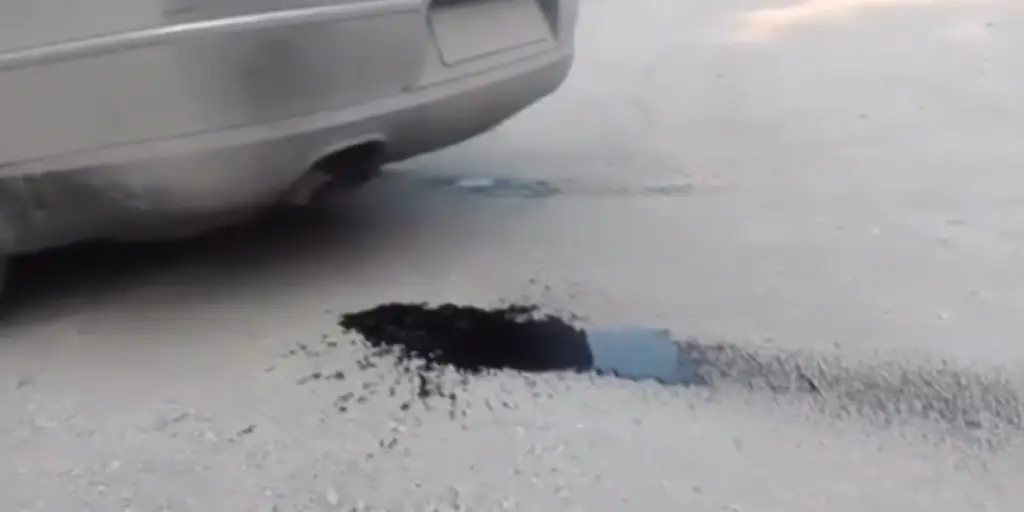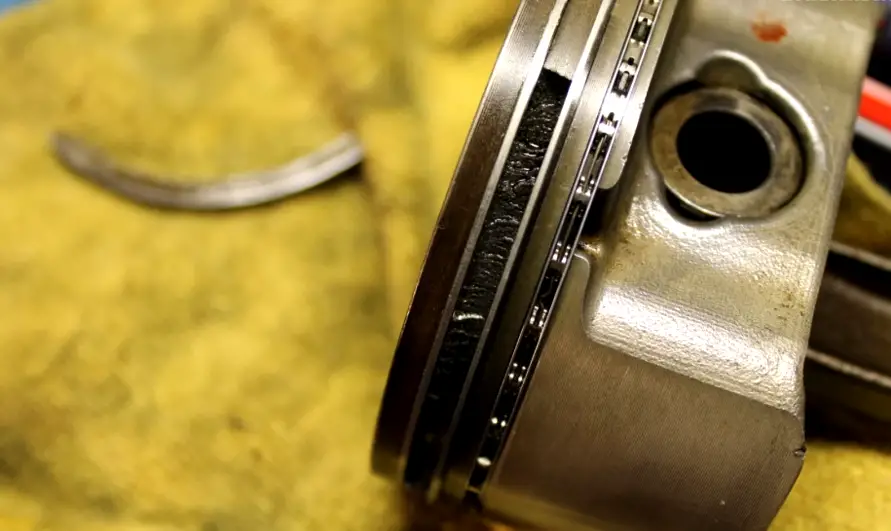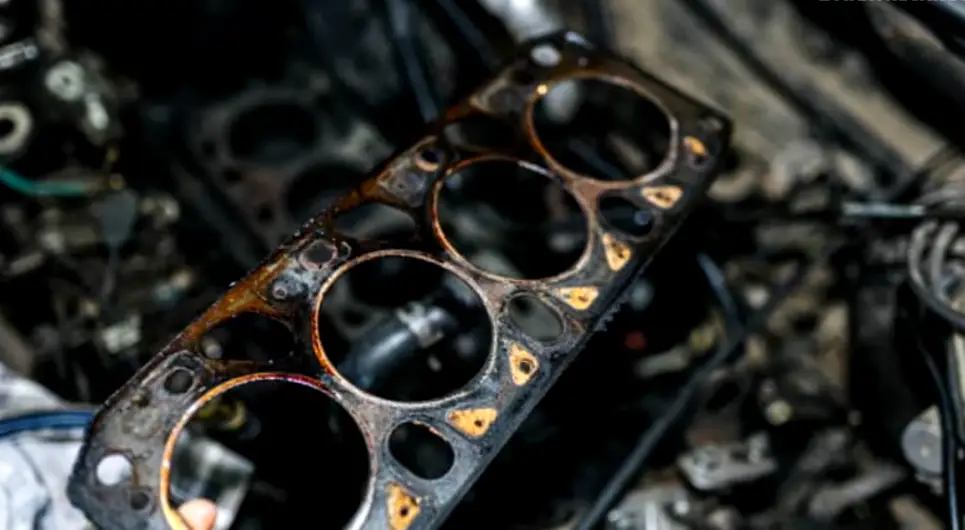Oil leaking from exhaust pipe usually indicates an internal engine issue, such as worn piston rings, valve seals, or a blown head gasket. This problem can lead to blue smoke, increased emissions, and potential engine damage if not addressed promptly.
Oil leaking from exhaust pipe is a red flag that many car owners may encounter but often misunderstand. While the exhaust system should only emit combustion gases and occasional water vapor, the presence of oil at the tailpipe or along the exhaust manifold typically indicates a deeper internal engine issue. If left untreated, it can lead to decreased engine performance, higher emissions, and even permanent engine damage.
In this article, we’ll explore the main causes behind oil leaking from the exhaust pipe, how to diagnose the problem accurately, recommended fixes, preventative tips, and some frequently asked questions. Whether you’re a DIY enthusiast or a concerned vehicle owner, this guide will help you take the right steps.

Contents
What Does Oil Leaking from Exhaust Pipe Mean?
If you notice oil leaking from your exhaust pipe, it means engine oil is somehow entering the exhaust system. This shouldn’t happen under normal operating conditions. Your car’s engine is designed to burn fuel, not oil. So if oil is coming through the exhaust, there’s likely a fault somewhere in the engine or turbocharging system that’s allowing oil to bypass its intended path.
This issue isn’t just messy — it’s potentially dangerous. It can lead to:
- Fire hazards due to oil contacting hot exhaust parts
- Poor fuel economy
- Increased emissions
- Engine damage or failure
Common Causes of Oil Leaking from Exhaust Pipe
Here are the common causes of oil leaking from exhaust pipe:
1. Worn or Damaged Valve Seals
Valve seals keep engine oil out of the combustion chamber. When they degrade or harden over time, oil seeps into the cylinder during intake. This oil doesn’t completely burn and can pass through to the exhaust, causing leaks and smoke.
2. Faulty Piston Rings
Piston rings seal the combustion chamber and prevent oil from entering. If they are worn, oil can sneak past and burn with the air-fuel mix, leading to smoke and leaks from the exhaust.

3. Blown Head Gasket
A blown head gasket can cause coolant and oil to mix, and in some cases, allow oil to enter the combustion chamber. This can result in white or blue smoke and oil residue on the exhaust pipe.

4. Cracked Engine Block or Cylinder Head
Cracks in the engine block or head can cause internal oil leaks. This is usually the most severe cause and can be identified by a combination of coolant loss, overheating, and visible oil in exhaust gases.
5. Leaking Turbocharger (If Equipped)
Turbochargers are lubricated by engine oil. A failing turbo seal can push oil directly into the intake or exhaust side, depending on which part has failed. If you drive a turbocharged vehicle and notice oil leaks from the exhaust, check the turbo first.
6. Overfilled Engine Oil
Overfilling the oil reservoir can cause excess pressure in the crankcase, leading oil to force its way past seals and into places it shouldn’t be — including the exhaust system.
7. Blocked PCV Valve
A malfunctioning PCV (Positive Crankcase Ventilation) valve can increase crankcase pressure, which may force oil into the intake manifold or combustion chamber, eventually reaching the exhaust system.
Symptoms of Oil Leaking from Exhaust Pipe
Before you can fix the issue, you need to identify it properly. Here are common signs:
- Visible oil drips or residue at the tailpipe
- Blue or bluish-white smoke from the exhaust
- Burning oil smell inside or around the vehicle
- Rough idle or reduced engine performance
- Unexplained oil consumption
- Check engine light or error codes
Diagnosing the Problem
Here’s how to approach diagnosis:
Step 1: Visual Inspection
Check the tailpipe for signs of fresh or baked-on oil. Look for soot buildup that’s oily to the touch. Inspect the exhaust manifold as well.
Step 2: Observe Smoke Color
- Blue smoke = burning oil.
- White smoke = coolant (possible head gasket issue).
- Black smoke = excess fuel (not oil-related).
Step 3: Check Oil Levels
Sudden drops in oil level may suggest internal leakage.
Step 4: Perform a Compression Test
Low compression in one or more cylinders can point to worn rings, valves, or a head gasket issue.
Step 5: Turbo Inspection (if applicable)
Remove intake and exhaust lines leading to/from the turbo. Check for excessive oil deposits inside.
How to Fix Oil Leaking from Exhaust Pipe
The solution depends entirely on the root cause. Here are the most common leak repair options:
1. Replacing Valve Seals
This requires removing the cylinder head and valve components. It’s a labor-intensive job but common in high-mileage engines.
2. Repairing or Replacing Piston Rings
Often involves a complete engine teardown. It’s costly and best handled by a professional.
3. Fixing a Blown Head Gasket
A head gasket replacement includes machining the cylinder head and replacing multiple seals and gaskets.
4. Turbocharger Repair
Replace or rebuild the turbo if oil is leaking from its seals. Don’t forget to inspect the oil feed and return lines for blockage.
5. Replacing the PCV Valve
This is one of the easiest and most affordable fixes — often under $50. It’s worth trying first before more invasive work.
Cleaning Up After Repairs
Once the repair is complete, residual oil in the exhaust may continue to burn off for several hours or days, depending on how much leaked in. To speed up the process:
- Drive the car on the highway for 15–30 minutes
- Use a catalytic converter cleaner if recommended
- Avoid short trips that don’t allow the exhaust to fully heat up
Prevention Tips
- Regularly check oil levels and top off as needed
- Change oil and filters at manufacturer-recommended intervals
- Avoid overfilling the engine with oil
- Inspect the PCV valve every 30,000 miles
- Watch for early signs of smoke or rough idle
- Avoid excessive engine load when oil levels are low
Frequently Asked Questions
Here are some FAQs about oil leakage from exhaust pipe –
Can I drive with oil leaking from my exhaust pipe?
It’s not safe to drive for long periods with oil leaking from the exhaust. It can damage the catalytic converter and increase fire risk.
What does blue smoke from my exhaust mean?
Blue smoke usually indicates burning oil, which can result from worn piston rings, valve seals, or a turbocharger leak.
Is oil leaking from exhaust a major repair?
It depends. A blocked PCV valve is minor, but piston ring damage or head gasket failure can require thousands of dollars to repair.
Will oil in the exhaust damage the catalytic converter?
Yes. Oil in the exhaust can clog or ruin the catalytic converter, leading to poor performance and emissions test failures.
How can I tell if the oil leak is from the turbo?
Inspect the turbo housing and its connections for excess oil. Look inside intake or exhaust hoses for oil pooling.
Conclusion
Oil leaking from exhaust pipe is a clear sign that your engine isn’t functioning correctly. While it may start as a minor nuisance, ignoring it can result in serious engine damage and expensive repairs.
If you’re unsure about the source of the problem, don’t hesitate to consult a professional mechanic. Acting quickly can save you thousands in repairs and keep your car running smoothly for years to come.